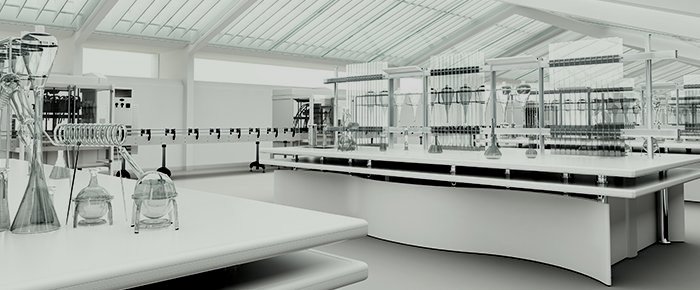Lab-Specific Safety

The Basics
Safety First!
You found a lab and a project that you enjoy! AWESOME!!! Before you get started, we want to make sure that you are equipped to keep yourself safe while exploring the wonders of your research project.
Regardless of whether you work in a “wet” lab or not, there is a measure of safety that you are required to practice at all times. This guide is not intended to replace your laboratory specific safety training. Talk to your PI or supervisor to ensure that you are well equipped to carry out your experiments under safe conditions.
The practice of good laboratory safety protects not only you, but also your fellow lab-mates. So be smart about it! REPORT all incidents to your supervisor as soon as they occur.
Lab Specific Safety
Wet Lab
A wet lab is one that handles chemicals or biological materials. For this reason, safety precautions in these labs are highly recommended to avoid exposure to toxins, corrosives, and carcinogens among other dangerous entities.
Types of Wet laboratories
Biomedical Laboratories
Cell Biology Labs
Fermenter Labs
Molecular Biology Labs
Pathology Labs
Tissue Culture Labs
Chemistry Laboratories
Organic Chemistry Labs
Physical Chemistry Labs
Say yes to dress code!!
Wearing the appropriate personal protective equipment (PPE) will go a long way in keeping you safe while conducting your experiments. Also, you should read your chemical/biological’s safety data sheet (SDS), provided by the manufacturer, to identify any additional PPE that is required when handling specific materials.
o Come prepared! What to wear to lab:
o Closed toe shoes
o Long pants or skirts
o Short sleeves or sleeves that do not hang
o What to wear while in lab (Proper PPE)
o Tie back long hair
o Wear gloves (check for holes before and during use)
o Wear lab coat
o Chemical goggles or face shield when applicable (check the SDS of material)
o Respiratory mask, when applicable (Check the SDS of the material)
How to avoid mistakes in a wet lab
Mistakes happen, but it is our responsibility to ensure that we follow good laboratory practices to avoid making them. When working with hazards such as harmful chemicals, infectious agents, sharp tool (including needles and razor blades), fragile glassware, high-speed centrifuges, and liquefied gases under pressure among others, we have to be particularly cautious. We can minimize risk by:
Wearing proper PPE (check for damages before use).
Receiving proper training on all equipment from your supervisor.
Not using mouth pipettes or letting any laboratory materials near our faces.
Not eating or drinking in the lab.
Reading all SDS of chemicals and/or infectious agents prior to use.
Staying focused, avoiding distractions and avoiding rushing through experiments.
Avoiding conducting experiments when extremely tired or feeling overwhelmed. Take a short break then resume work
Planning all experiments ahead of time (i.e. create experimental protocols and discuss with supervisor if you have concerns).
Not touching your cell-phone and other personal materials with gloves.
Disposing of all waste appropriately (Check SDS and lab protocols).
Washing hands before leaving lab.
WHEN IN DOUBT ASK QUESTIONS, DO NOT PRESUME
BECOME FAMILIAR WITH HAZARD SYMBOLS
Dry Lab
If you don’t work with chemicals or biological agents, that’s okay, we still want you to be safe while working with computers, power tools, electrical equipment, and sharp objects.
Types of Dry labs:
Computer Labs (Mainframe, Workstation, and PCs)
Confocal, Electron Microscope and other imaging Labs
Electromagnetic Instrument Labs
Electrophysiology and Biophysics Labs
Flow Cytometry and Mass Spectrophotometry Labs
Laser Labs
Robotic Equipment Labs
Some Do’s and Don’ts of a Dry lab
Prevent electrical shocks and fires:
Don’t overload power strips/ surge protectors and elevate off the ground in case of flooding.
Wear safety goggles when working with things that might shatter.
When using a soldering iron:
Don’t touch the tip.
Do hold wire with tweezers.
Do keep the cleaning sponge wet.
Don’t leave unattended, always unplug or place on stand when not in use.
Do wear safety goggles and fume mask, when applicable.
Keep flammable materials away from electrical circuit.
Do get up and move around from time to time to stretch and protect your eyes.
Laser Lab
If working with lasers is a part of your research, proper care and PPE must be worn at all times to prevent burns and eye damage. Do not operate a laser without the proper laser safety training (https://www.vumc.org/safety/training/laser-safety-training)
Things to do to avoid injury
Wear laser safety goggles at all times:
Check that the goggles provide the right amount of protection (i.e. optical density/absorbance) for the wavelength of laser being used (https://ehs.princeton.edu/node/472).
Do not stare directly into a laser or align your eyes within the laser path.
Be aware of the class of laser being used, what dangers and PPE are associated with that class:
All exposed class IIIb and IV requires safety goggles and possible skin protection if maximum permissible exposure is exceeded.
Familiarize yourself with the ANSI standard:
Remove all rings or other jewelry that could act as a reflective surface.
References
https://formaspace.com/articles/casework/dos-donts-wet-lab-dry-lab-users/
Resources
https://research.vanderbilt.edu/
https://www.vumc.org/safety/training/what-you-do/lab-safety-training-guide







